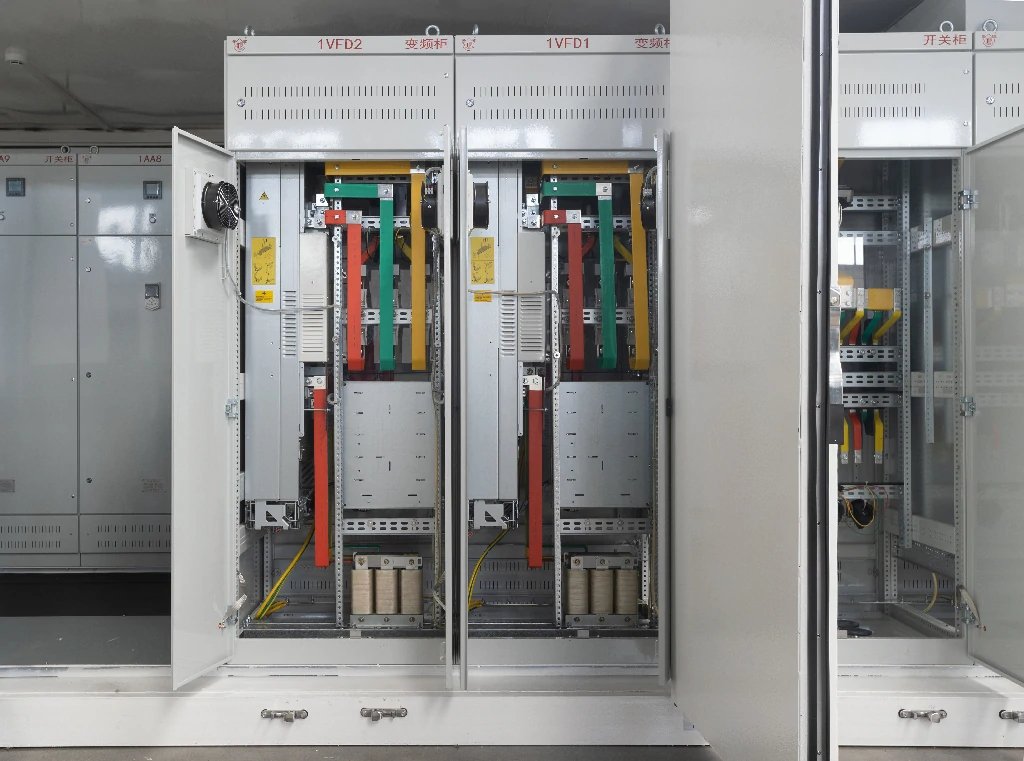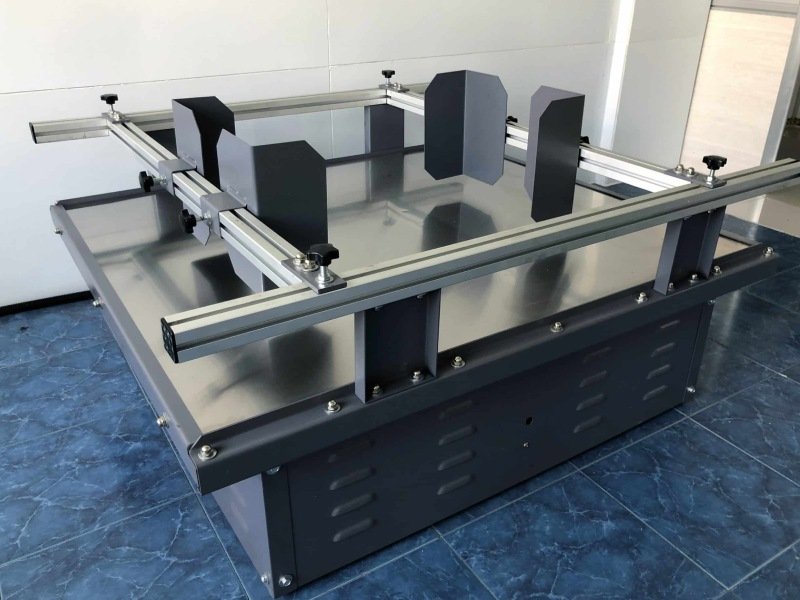Cabinet damping hinges, often referred to as soft-close hinges or hydraulic hinges, represent a significant advancement in cabinet hardware technology. These hinges are designed to enhance the functionality and longevity of cabinet doors by ensuring they close smoothly, quietly, and securely. Unlike traditional hinges, which allow cabinet doors to slam shut, damping hinges incorporate a mechanism that slows the closing action, reducing noise and preventing damage to both the door and the cabinet frame. This article explores the intricacies of cabinet damping hinges, including their design, operational principles, benefits, types, installation, maintenance, and applications, providing a comprehensive guide for homeowners, designers, and cabinetmakers alike.
What is a Cabinet Damping Hinge?
A cabinet damping hinge is a specialized type of hinge used primarily in cabinetry to connect a door to the cabinet frame while incorporating a damping mechanism to control the closing speed. The term "damping" refers to the process of reducing the energy or momentum of a moving object, in this case, the cabinet door, to prevent abrupt closure. These hinges are also known as soft-close hinges because they ensure the door closes gently, even if it is pushed with force. According to industry sources, damping hinges are designed to minimize the noise emitted when a cabinet door collides with the cabinet body, creating a quiet and comfortable indoor environment.
The primary components of a damping hinge include the hinge cup, arm, base plate (or mounting plate), and a damping mechanism, which is typically hydraulic or spring-based. The hinge cup is mounted into a bored hole in the cabinet door, while the base plate is attached to the cabinet frame. The damping mechanism, often integrated within the hinge cup or arm, uses hydraulic fluid, silicone oil, or a mechanical spring to absorb and dissipate the kinetic energy of the closing door, ensuring a controlled and smooth motion.
The Principle of Operation
The functionality of a damping hinge relies on its ability to manage the energy of the closing door. The damping mechanism works by converting the mechanical energy of the door’s motion into another form of energy, such as heat or wave energy, thereby slowing the door’s movement. There are two primary types of damping mechanisms used in cabinet hinges: friction damping and radiation damping.
- Friction Damping: This method involves the generation of heat due to frictional resistance within the hinge. As the door closes, the damping mechanism resists the motion, converting the mechanical energy into thermal energy, which reduces the speed of the door.
- Radiation Damping: In this case, the system causes surrounding particles to vibrate, radiating the energy outward as wave energy, which gradually slows the door’s movement.
Hydraulic damping hinges, which are among the most common, use a hydraulic cylinder filled with fluid (often silicone oil) to achieve this effect. When the cabinet door reaches a certain angle, typically around 60 degrees, the hydraulic mechanism engages, slowing the door’s closure. This ensures that even if the door is closed forcefully, it will decelerate and close gently, preventing slamming and reducing noise. The result is a smooth, controlled motion that enhances the user experience.
Types of Cabinet Damping Hinges
Cabinet damping hinges come in various types, each designed to suit specific cabinet configurations and aesthetic preferences. Below are some of the most common types, as outlined in industry resources:
-
Concealed Damping Hinges (Euro Hinges): These hinges, also known as cup hinges, are mounted inside the cabinet door and frame, making them invisible when the door is closed. They are popular in modern and contemporary cabinet designs due to their sleek, streamlined appearance. Concealed hinges typically consist of a hinge cup, arm, and base plate, with the damping mechanism integrated into the hinge cup or arm. They offer full in-situ adjustability for alignment, allowing for precise positioning of the door.
-
Inset Damping Hinges: Designed for inset cabinet doors, where the door sits flush within the cabinet frame, these hinges provide a clean, sophisticated look. Inset damping hinges may be concealed or partially visible (e.g., barrel or mortise hinges) and are often used in high-end or traditional cabinetry. They incorporate a soft-close mechanism to ensure the door closes smoothly without protruding beyond the frame.
-
Overlay Damping Hinges: These hinges are used for overlay cabinet doors, where the door extends past the cabinet opening on the hinge side. Overlay hinges can be full overlay (covering the entire side material) or half overlay (covering part of the side material). The damping mechanism ensures a soft-close action, and these hinges are adjustable to accommodate various overlay measurements.
-
Angled Damping Hinges: Designed for cabinets with non-standard angles, such as corner cabinets or those requiring a wide opening angle (e.g., 165 degrees), angled damping hinges incorporate hydraulic damping for smooth operation. They are ideal for specialized applications like kitchen corner cabinets or wardrobe doors.
-
Surface-Mount Damping Hinges: Unlike concealed hinges, surface-mount damping hinges are visible when the door is closed and are mounted on the exterior surfaces of the door and frame. They are often used in decorative or rustic cabinet designs and incorporate a damping mechanism to prevent slamming.
-
Self-Closing Damping Hinges: These hinges combine a spring mechanism with a damping system, allowing the door to close automatically when within a certain distance from the closed position. The damping mechanism ensures the closure is soft and controlled, preventing the door from being left ajar.
Benefits of Cabinet Damping Hinges
Cabinet damping hinges offer numerous advantages, making them a preferred choice for modern cabinetry. These benefits include:
- Noise Reduction: By slowing the closing action, damping hinges eliminate the loud slamming noise associated with traditional hinges, creating a quieter environment, especially in busy areas like kitchens.
- Extended Cabinet Lifespan: The controlled closing mechanism reduces wear and tear on the cabinet door and frame, preventing damage from repeated slamming. This can extend the life of the cabinetry, keeping it functional and aesthetically pleasing for longer.
- Safety: Soft-close hinges reduce the risk of pinched fingers, particularly in households with children or pets, as the door closes slowly and gently.[]
- Aesthetic Appeal: Concealed damping hinges provide a clean, seamless look, enhancing the overall appearance of modern or high-end cabinetry.
- Versatility: Available in various types and configurations, damping hinges can be used in a wide range of cabinet styles, from traditional to contemporary, and for different applications, such as kitchen cabinets, wardrobes, and bookcases.
- Adjustability: Many damping hinges feature cam adjustment screws, allowing for precise vertical, horizontal, and depth adjustments to ensure perfect door alignment.
- Durability: High-quality damping hinges, often made from cold-rolled steel with a nickel-plated finish, are designed to withstand frequent use and resist corrosion, ensuring long-lasting performance.
Installation of Cabinet Damping Hinges
Installing cabinet damping hinges requires precision to ensure proper function and alignment. Below is a step-by-step guide to installing a typical concealed damping hinge, based on industry best practices:
Tools and Materials Needed
- Damping hinges (appropriate type for your cabinet)
- Drill with a 35mm Forstner bit (for concealed hinges)
- Screwdriver or drill with screwdriver bit
- Measuring tape or ruler
- Pencil or marker
- Level
- Screws (typically provided with the hinges)
Installation Steps
- Determine Hinge Placement: Measure and mark the position for the hinge cup on the cabinet door. For concealed hinges, the hinge cup is typically bored 3-5mm from the edge of the door, depending on the manufacturer’s specifications. Ensure the placement aligns with the cabinet frame or base plate position.
- Bore the Hinge Cup Hole: Using a 35mm Forstner bit, drill a hole to the specified depth (usually 10-12mm) for the hinge cup. Be careful to keep the drill perpendicular to the door to ensure a clean, precise hole.
- Attach the Hinge to the Door: Insert the hinge cup into the bored hole and secure it with the provided screws. Ensure the hinge arm is aligned properly with the door edge.
- Install the Base Plate: Attach the base plate to the cabinet frame or interior wall, depending on whether the cabinet is framed or frameless. Use a level to ensure the base plate is straight, and secure it with screws.
- Clip or Slide the Hinge onto the Base Plate: For clip-on hinges, snap the hinge arm onto the base plate. For slide-on hinges, slide the arm into the base plate channel and secure it with a screw.
- Adjust the Hinge: Use the cam adjustment screws on the hinge or base plate to fine-tune the door’s position (up/down, left/right, in/out) for proper alignment and a consistent gap around the door.
- Test the Door: Open and close the door to ensure the damping mechanism functions correctly and the door closes smoothly without slamming. Make further adjustments as needed.
Tips for Successful Installation
- Always follow the manufacturer’s instructions, as specifications may vary.
- Use a jig or template for boring hinge cup holes to ensure consistency, especially for multiple doors.
- Check the door’s weight and size to ensure the hinges are rated for the load. Most damping hinges are tested for 100,000 open/close cycles under a 75-pound load.
- For retrofitting existing cabinets, ensure the new hinges are compatible with the existing overlay or inset configuration.
Maintenance of Cabinet Damping Hinges
To ensure the longevity and optimal performance of cabinet damping hinges, regular maintenance is essential. Here are some tips based on industry recommendations:
- Cleaning: Wipe down hinges with a damp cloth to remove dust and grime. Avoid abrasive cleaners that could damage the finish.
- Lubrication: Apply a small amount of silicone-based lubricant to the moving parts annually to ensure smooth operation. Avoid using oil-based lubricants, as they can attract dust.
- Tighten Screws: Periodically check and tighten any loose screws to prevent misalignment or wobbling doors.
- Adjust Alignment: Over time, doors may shift slightly. Use the hinge’s adjustment screws to realign the door, ensuring a consistent gap and proper closure.
- Inspect for Wear: Check for signs of wear, such as rust or reduced damping effectiveness. High-quality hinges should resist corrosion for at least 48 hours in a salt spray test. If the damping mechanism fails (e.g., due to oil leakage in hydraulic hinges), replace the hinge.
Common Issues and Solutions
Even with proper installation and maintenance, issues may arise. Here are some common problems and their solutions:
- Misaligned Doors: Adjust the cam screws to realign the door within the frame.
- Squeaking Hinges: Apply a small amount of silicone-based lubricant to the hinge’s moving parts.
- Loose Doors: Tighten the mounting screws on both the door and the cabinet frame.
- Doors Not Closing Properly: Check for obstructions, ensure the cabinet is not overloaded, and verify that the damping mechanism is functioning. Replace the hinge if the damping effect is lost.
Applications of Cabinet Damping Hinges
Cabinet damping hinges are versatile and used in a variety of settings, including:
- Kitchen Cabinets: Soft-close hinges are particularly popular in kitchens, where frequent use and heavy doors benefit from the durability and noise reduction of damping hinges.
- Wardrobes: Damping hinges provide smooth, quiet operation for wardrobe doors, enhancing the user experience in bedrooms.
- Bookcases and Storage Units: These hinges are used in bookcases and other storage units to protect delicate contents, such as glassware, from damage due to slamming.
- Bathroom Cabinets: In high-traffic areas like bathrooms, damping hinges ensure safety and durability, especially in humid environments where corrosion-resistant materials are essential.
- Specialty Cabinets: Angled damping hinges are used in corner cabinets or cabinets with unique configurations, such as those with Lazy Susan mechanisms.
Choosing the Right Cabinet Damping Hinge
Selecting the appropriate damping hinge depends on several factors:
- Cabinet Type: Determine whether the cabinet is framed or frameless, as this affects the hinge type (e.g., face frame hinges for framed cabinets, concealed hinges for frameless).
- Overlay or Inset: Measure the overlay or inset to choose a hinge with the correct cranking (e.g., 0mm for full overlay, 15-17mm for inset).
- Door Weight and Size: Ensure the hinge is rated for the door’s weight and size to prevent premature wear.
- Aesthetic Preferences: Choose concealed hinges for a modern look or exposed hinges for a traditional or rustic aesthetic.
- Damping Mechanism: Consider the type of damping (hydraulic, silicone oil, or spring-based) based on durability and performance needs. Hydraulic hinges may leak over time, while spring-based mechanisms are more stable.
- Corrosion Resistance: Opt for hinges with a nickel-plated or stainless steel finish for humid environments like kitchens or bathrooms.
Conclusion
Cabinet damping hinges are a game-changer in modern cabinetry, offering a combination of functionality, safety, and aesthetic appeal. By incorporating advanced damping mechanisms, these hinges ensure that cabinet doors close smoothly and quietly, reducing wear and tear, enhancing safety, and creating a more pleasant user experience. With various types available, from concealed Euro hinges to specialty angled hinges, there is a damping hinge for every cabinet application. Proper installation and maintenance are key to maximizing their benefits, and careful selection based on cabinet type, door configuration, and environmental factors ensures optimal performance. Whether you’re upgrading a kitchen, designing a custom wardrobe, or retrofitting existing cabinets, cabinet damping hinges are an essential component for achieving both practicality and elegance in your cabinetry.







